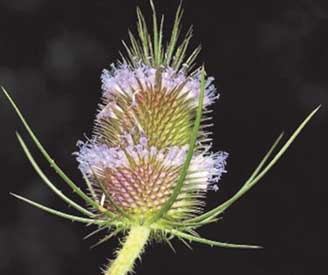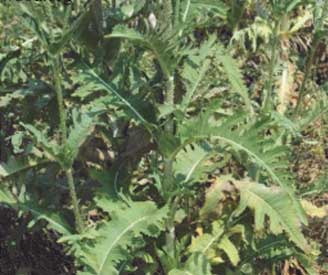Cutleaf & Common Teasel
Dipsacus laciniatus & fullonum
Description
Cutleaf: perennial, grows as a basal rosette with flowering stalk that can reach 6 ft. Opposite leaves joined at the base and form cups that surround the prickly stem. Small, white flowers densely cover oval flower heads (July to September). Spiny bracts on ends of flower stems. Common: biennial, basal rosette until flower stems develop (up to 6 ft.). Rosette leaves lanceolate, stem leaves are opposite, lanceolate and fused at the base. All leaves have short prickles on the midvein. Spiny flower heads covered with small, lavender to white flowers (April to September).
Habitat
Open, sunny habitats preferring roadsides and other disturbed areas, although it can sometimes be found in high quality areas such as prairies, savannas, and sedge meadows.
Location in Nebraska
Cutleaf and common teasel are both listed county noxious weeds in Lancaster County. They are both found in several Nebraska counties, primarily in the Southeast.
Pathway of Introduction and Spread
Introduced from Europe and spreads by producing abundant seeds dispersed by the wind after the seed-head has dried.
Impacts
The teasels form large dense stands that choke out desirable plant species. This can reduce forage, wildlife habitat, and species diversity.
Chris Evens, bugwood.org
David Cappaert, Michigan State University, bugwood.org
David Cappaert, Utah State University, bugwood.org



